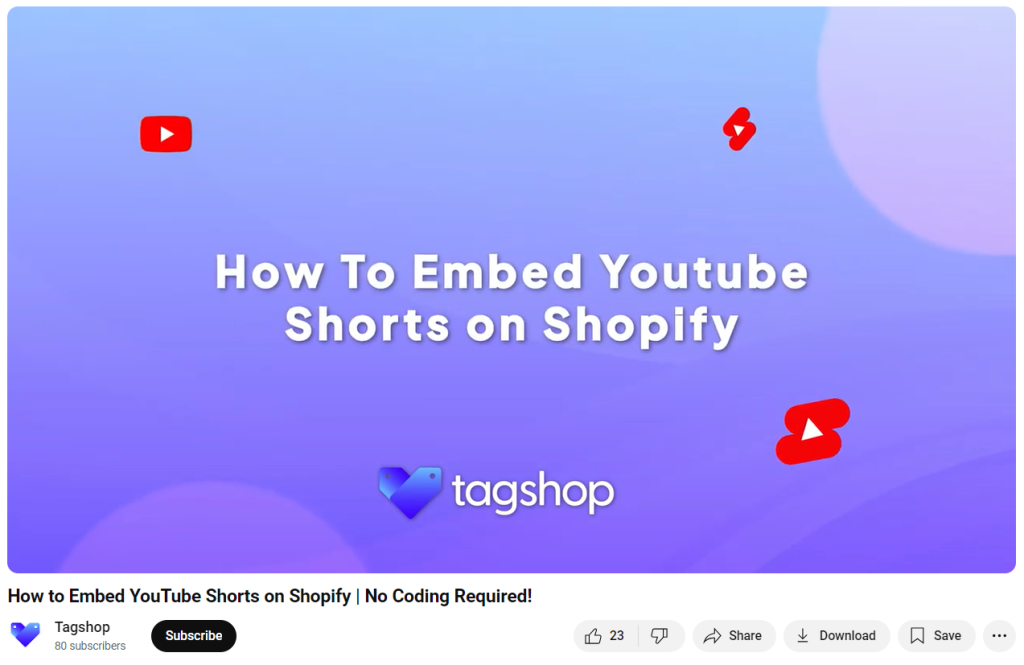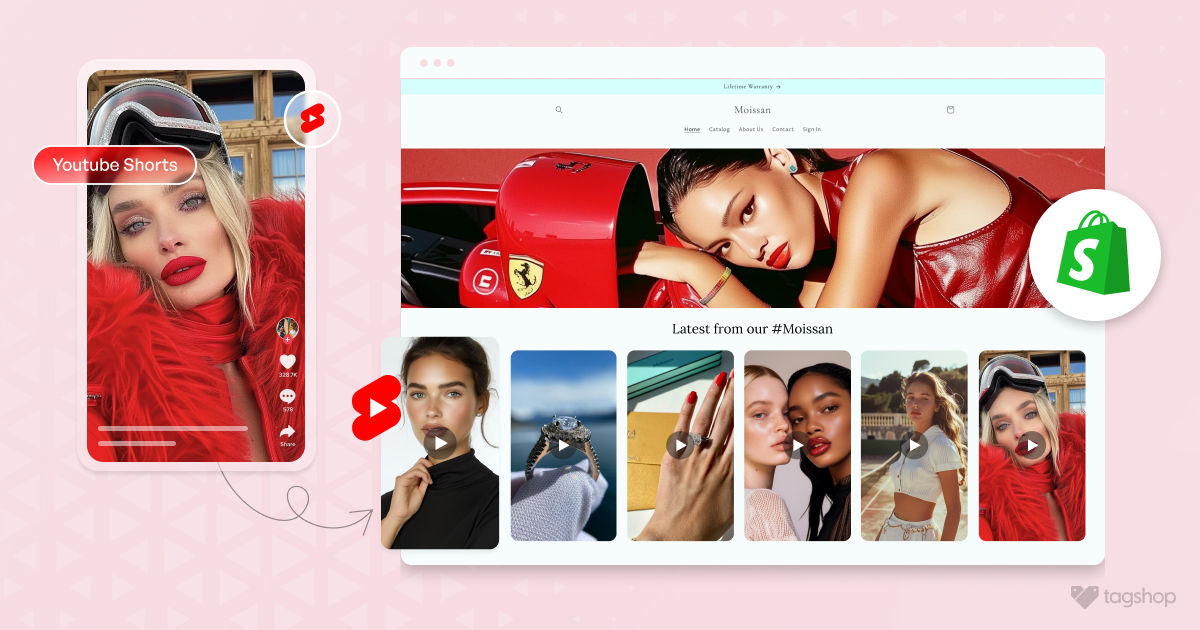How to Embed YouTube Feed on Website for Free
Looking for a way to boost your website engagement? Embedding YouTube videos on your website is the way to go.
YouTube is the leading search engine platform, ranking only behind Google. It’s a straightforward interface, and long videos can keep visitors hooked. What if we told you that you can also enjoy these benefits on your website? Sounds impressive, doesn’t it? Embedding YouTube Feed on your website is an effective way to boost your website traffic, and with this blog, you’ll learn how easy it is to do so.
We’ve discussed the best ways to embed YouTube on your website.
But before that, let’s explore some basics.
What is a YouTube Feed?
YouTube is a centralized location where users can find videos that interest them. It uses machine learning to understand users’ interests based on their watching habits. The feed includes videos from the channel that a user has subscribed to, as well as recommendations. It is designed to provide users with continuous video content.
Youtube Channel
Youtube Playlist
Youtube Shorts
Youtube Keywords
Youtube Location
In this scenario, the YouTube feed refers to the aggregated YouTube videos that will be showcased on the website for marketing purposes.
Let us look at how you can embed a YouTube feed on a website.
Methods to Embed YouTube Feed on a Website
Method 1. Using YouTube Feed Code
YouTube helps users embed YouTube videos on websites without using any third-party tools. Here are steps that can help you achieve that.
Step 1: Go to YouTube.com on any web browser.
Step 2: find the YouTube video you want to embed on the website.

Step 3: Click the Share button to find the Embed (<>) option.

Step 4: Click on that and copy the embed code given.

Step 5: Paste the embed code at the backend of the website.
However, there is a catch. Embedding YouTube videos on a website with this method does not allow the customization of the overall look of the widget. On top of that, users are also unable to auto-update the feed, meaning businesses are stuck with the same videos appearing on the website.
Method 2. Embed YouTube Feed Using Tagshop (Recommended)
Tagshop is an all-in-one UGC platform for eCommerce businesses and online brands to activate user-generated content by tagging products and publishing shoppable UGC galleries on their website to drive sales.
We will talk more about the features of Tagshop later in the blog.
To embed YouTube Feed on the website using Tagshop, here are the steps you need to follow.
Step 1: Collect Videos From YouTube
- Log in or create an account on Tagshop
- Go to feed and click on the Add New button
- From the given Sources, choose YouTube as the preferred one.

- A dialogue box will appear. Choose ‘Channel URL’ to create a feed.

- Provide the Channel URL.
- Now Click “Create Feed“, and you will notice your feed has been created.
Step 2: Moderate Your YouTube Widget
Once your feed is created, you can moderate it based on what you want to showcase on your website. Go to Content and select the post to make Public, Private, and Delete.

Advance Feature: Make Your Feed Shoppable
Here is a surprise for eCommerce brand owners! You can now make your YouTube feed shoppable. Follow these steps to make your YouTube feed shoppable and reduce friction for potential buyers.
- To make your YouTube videos shoppable, go to ‘Product Catalog’ from the sidebar and “Sync your products“.

- Once your products are synced, go to content and click on ‘Tag Products’ and tag each product by name, category, and SKU.

Note: You can tag multiple products in a post by turning on the hotspot feature.
Step 3: Publish Your YouTube Feed On Website
Go to ‘Publish’ and choose the theme. Customization options and CTA buttons that match your website.
Once you have decided on the themes, click ‘Save’ in the sidebar and click “Generate Code” at the bottom.

Choose your preferred CMS platform and code to embed.

- Paste the embed code into the website’s backend.
- Now, you will see your YouTube feed on the website. Congratulations!
Should You Add YouTube Feed Manually or Automatically? Let’s Compare
| Requirements | Method 1. Using YouTube | Method 2. Using Tagshop |
| Auto Feed Update | No | Yes |
| Coding Required | No | No |
| Themes and Templates | No | Yes |
| Advance Features | No | Yes |
| Shoppable Videos | No | Yes |
| Products Tagging | No | Yes |
| Bulk Posting | No | Yes |
| Engagement Metrics | No | Yes |
| Customization | No | Yes |
| Advance Support | No | Yes |
| Platform Compatibility | Yes | Yes |
| Time-consuming | No | No |
Live Demo: YouTube Feed on Website
Youtube Channel
Youtube Playlist
Youtube Shorts
Youtube Keywords
Youtube Location
Embed YouTube Feed on Any Website
Now that you know the basics of generating embed code and copying and pasting, like the simplicity of Tagshop. What if you have a different CMS platform that can confuse you about the process? Fret not; Tagshop is supportive of 99% of major CMS platforms.
1. Show YouTube Feed on the Shopify Store

For the instructions below to embed YouTube videos on your Shopify website.
Step 1: Log in to your Shopify account.
Step 2: Navigate to the “Online Store” option.
Step 3: Now, from the drop-down menu, select the page. Navigate to the page where you want to showcase your YouTube videos.
Step 4: Paste the Tagshop-generated code in the HTML section.
Save all the changes made, and you have successfully embedded YouTube videos on the Shopify store.
2. Embed YouTube Feed on WordPress Website

Here are the steps you need to follow to embed YouTube videos on a WordPress website.
Step 1: Login to your WordPress admin panel.
Step 2: Go to the search and click ‘Custom HTML block’.
Step 3: Paste the code generated from Tagshop.
And you are done! You now have a YouTube video widget on the WordPress website.
3. Display YouTube Feed on Squarespace Website

Follow the steps to embed YouTube videos on the Squarespace website.
Step 1: Login to Squarespace admin panel.
Step 2: Pick the page to embed YouTube videos or create a new one.
Step 3: Edit the page and Choose “Add Section”.
Step 4: Click on the </> icon in the URL field and paste your code here.
Step 5: Click ‘Set’ and ‘Apply’ the changes to see your YouTube widget on the website.
4. Add a YouTube Feed on the Magento Store

Here are the steps you need to follow to embed YouTube videos on the Magento website.
Step 1: Go to the Magento website admin panel.
Step 2: Pick the ‘Content’ option from the left sidebar.
Step 3: Under the Design section, pick ‘Configuration.’
Step 4: Design or edit your web page.
Step 5: Scroll down and pick the HTML Head option.
Step 6: Paste your YouTube video code here and save the changes.
Congratulations! You now have the YouTube videos on the Magento website.
5. Embed YouTube Feed on the Wix Store

Here are the steps you need to follow to embed a YouTube feed on the Wix website.
Step 1: Login to your Wix admin panel.
Step 2: Select the ‘Main Page’ and choose the ‘+’ button.
Step 3: Click on “More” from the bottom.
Step 4: Go to ‘Embed Code’ and select ‘Embed HTML’.
Step 5: Paste the embed code generated for Tagshop.
Voila! You now have a YouTube widget on the Wix website.
Benefits of Embedding YouTube Videos on Website
Many studies have also stated that we consume 90% of the content visually. Therefore, YouTube videos are beneficial when used on a website. Here are some of the benefits of adding YouTube videos to a website. Take a look.
1. Increase Time Spent On Website
Businesses often struggle to increase the time spent on their websites. Instead, they can efficiently utilize engaging and entertaining YouTube videos to help visitors stay for a few more minutes.
2. Increases Conversion
Videos have become a powerful marketing tool for the business. As a result, the way business owners perceive YouTube videos has also transformed. Not only brands but the customer also likes to see more video content about how the products before they make a purchase. This is where the YouTube widget comes into the picture. Businesses can use user-generated YouTube videos to instill trust and social proof in their website visitors’ minds and persuade them to purchase.
3. Helps In Better Ranking
Although not a direct factor, embedding YouTube videos on a website helps the business owner rank their website better. Here is how it happens: When businesses embed YouTube videos on their websites, they gain more dwell time, which helps them send trust signals to the Search Engine Results Page. This eventually leads to a better ranking.
Conclusion
Embedding YouTube videos on a website can significantly enhance user engagement and drive sales. While the traditional and free method of embedding YouTube videos is simple, it does not allow the freedom to auto-update the feed when a new video is uploaded.
Using Tagshop offers an advanced approach to showcasing YouTube videos on a website. From customizing the look of the website’s feed to moderating irrelevant content, you have it all with Tagshop.
Furthermore, comparing the two methods shows that using Tagshop for embedding YouTube videos provides numerous advantages, such as auto-update, product tagging, engagement metrics, and platform compatibility without coding.










